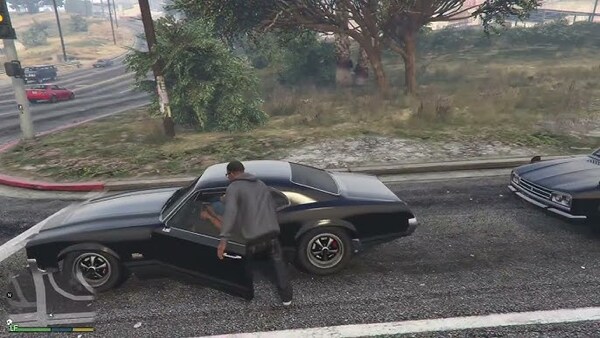Popular Now
GTA V stands as one of the most iconic open-world games of all time, not just because of its sprawling landscape or satirical storytelling, but due to its introduction of elaborate heist missions. These heists are more than just robberies—they're multi-layered strategic operations that require detailed planning, diverse skill application, and coordinated execution. Unlike typical missions in the game, heists elevate the gameplay into a cinematic experience where the player becomes a director of chaos. This article takes a deep, structured look at one of GTA V’s most praised features: the heist system. From recruitment to escape, we’ll analyze each stage of the process across ten time-ordered, thematically connected sections that go far beyond surface-level play.

Understanding the Heist System in GTA V
The heists in GTA V are not just scripted events—they represent a dynamic gameplay loop combining preparation, choice, and execution.
Rockstar implemented heists as the core of GTA V's story and later expanded them in GTA Online. Story mode heists involve a trio of protagonists: Michael, Franklin, and Trevor. Each heist has its own tone, challenges, and outcomes depending on player decisions. The setup influences everything from your crew’s behavior to your potential payout.
In contrast to standard missions, heists offer branching paths. Players must choose crew members, select entry methods, and sometimes even acquire vehicles or equipment in advance. The variability turns each heist into a high-stakes, personal challenge.
Recruiting Your Crew: Skill vs. Payout
One of the earliest—and most critical—choices in a heist is crew selection.
Each crew member (driver, gunman, hacker) has skill stats that directly affect how efficiently they perform. Better skill usually means better outcomes—faster hacks, smarter driving, better gunplay—but also means a higher cut of the profits.
Players face a dilemma: hire the experienced pro and lose more money, or take a gamble with a rookie and risk failure. The game subtly encourages players to train low-skilled members across heists. For example, using a weak hacker in one heist might be risky, but if they survive and succeed, their skill level improves for future jobs.
Heist Prep: Scouting and Strategy
Heists in GTA V often begin with scouting—a phase many players overlook but which deeply influences the final outcome.
During scouting missions, players gather intel on target locations. These missions vary: casing a jewelry store, tailing a security truck, or stealing blueprints. Skipping optional objectives can make the heist more difficult, as you might miss escape routes or guard placements.
Players must choose between "Loud" and "Smart" approaches. Loud methods involve direct confrontation—guns blazing—while Smart approaches rely on deception, stealth, or technological advantages. Your prep and intel directly impact which strategy succeeds.
The Role of Each Character in Heists
GTA V’s unique mechanic of switching between three protagonists allows for simultaneous multitasking in heists.
Each character has a specialty—Michael is a shooter, Franklin is a driver, and Trevor is a pilot. During heists, players may need to switch mid-mission to coordinate actions. For example, Michael may be holding hostages, while Franklin positions the getaway car and Trevor provides air support.
Success often depends on when and how you switch between characters. Poor coordination leads to casualties, lost loot, or mission failure. Strategic switching is key to maintaining pressure and control throughout the operation.

Heist Equipment and Vehicles: Hidden Complexity
Preparing for a heist often involves sourcing equipment and vehicles, tasks that affect everything from mobility to survivability.
In missions like "The Big Score," players must steal drilling machines, acquire an armored truck, or rig getaway cars. These aren't fetch quests—they require strategy. You must decide whether to risk police attention or take time-consuming stealth routes.
Vehicle choice also matters. Fast cars may be ideal for urban escapes, while off-road trucks are better for mountainous getaways. The correct gear can mean the difference between success and an exploding van of cash.
Executing the Heist: Real-Time Adaptation
No matter how well you plan, execution always brings surprises.
Even in a well-planned mission, the AI or physics engine may throw you curveballs—cars may block escape routes, cops may spawn unpredictably, or an NPC crew member may make a mistake. Players must adapt in real time.
One of GTA V’s most memorable heists, "Blitz Play," forces players to coordinate a garbage truck ambush, roadblock, and escape vehicle. Misplacing a vehicle or arriving out of sync results in chaos. The game encourages players to rehearse mentally before the mission begins.
Escape Routes and Police Response
Planning the heist is only half the job—getting away clean is where the real test begins.
Cops in GTA V use line-of-sight and patrol zones. A poorly chosen escape route leads directly into police traps. Players who scout well beforehand will know alternate exits and hideouts.
Advanced players use the terrain—such as sewer tunnels, alleyways, and train tracks—to their advantage. Disguised getaway vehicles placed strategically beforehand can help lose a wanted level faster. It’s all about minimizing exposure and maximizing speed.

Consequences of Crew Failure
One of the most punishing parts of GTA V heists is losing a crew member.
A low-skill gunman might drop part of the loot while escaping. A poor driver might crash the getaway vehicle. Sometimes these errors cause permanent character deaths—removing them from future heists entirely.
This creates an emotional and tactical layer. Players must weigh the benefit of saving money against the cost of failure. Rockstar intentionally blurs the line between gameplay efficiency and storytelling.
Comparing Offline Heists to GTA Online
GTA Online took the blueprint of story heists and expanded it into cooperative multiplayer formats.
Online heists require four players, each with specific roles. Communication and synchronization are vital—without it, missions fail. While Online heists allow for more player creativity, they also introduce new timing challenges and role complexity.
Players in Online must also fund heists, making financial planning a layer not present in Story Mode. You become not just the leader, but also the financier, investor, and risk-taker.
Replaying Heists: Mastery and Strategy Evolution
One of GTA V’s strengths is the ability to replay heists and test different outcomes.
Replaying allows you to experiment: hire different crew members, choose alternate strategies, or improve execution time. Rockstar included this mechanic so that players could refine their approach and maximize profits.
There’s even an achievement/trophy for completing all heist setups and executions with the optimal crew and maximum payout. This replayability rewards those who study patterns, master timing, and refine their in-game tactics like real-life planners.

Conclusion
Heists in GTA V aren’t just glorified shootouts—they’re a complex blend of narrative, skill, and strategy. From selecting the right crew and executing precise prep missions, to managing real-time decisions and orchestrating high-speed escapes, heists represent the peak of Rockstar’s mission design. They challenge players not just to react, but to plan ahead. With branching outcomes, evolving characters, and replayable paths, they also offer one of the most rewarding systems in the game for those willing to master it.
So next time you gear up for a job, don’t just think about the loot—think like a mastermind.


















